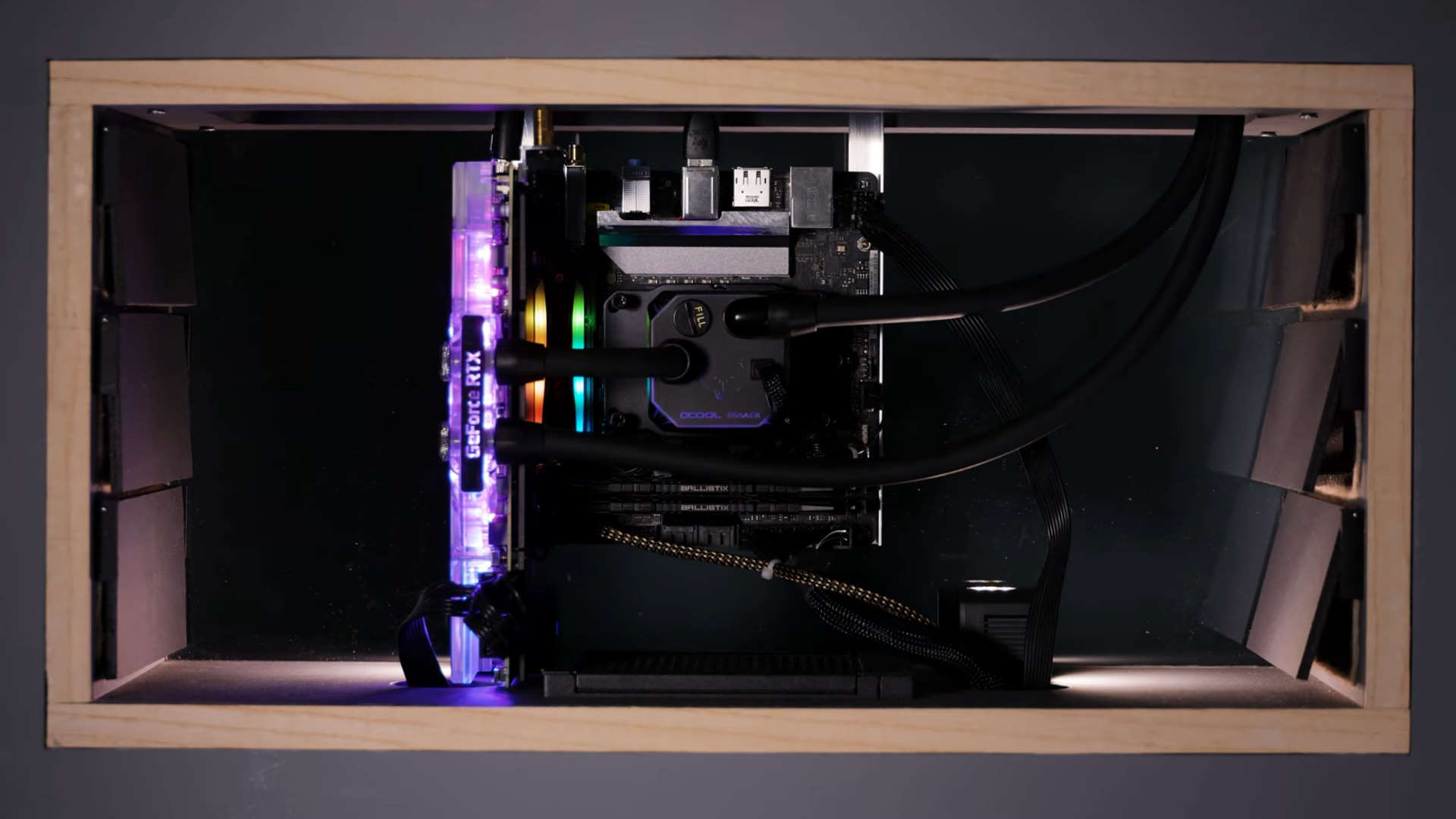Welcome the world's first PC cooled by magnetized bellows
And it's not just a novelty, the thing works surprisingly well.
Ever considered a more experimental method of cooling your PC components? What about a PC that breathes? With CPUs and GPUs running ever hotter, innovative techniques like this may just be the next step in hardware evolution. Though there are some major drawbacks at this stage.

Best CPU for gaming: the top chips from Intel and AMD
Best graphics card: your perfect pixel-pusher awaits
Best SSD for gaming: get into the game ahead of the rest
This cooling system, designed and built by Matt from DIY Perks, utilises some fancy technology (which we'll get to in a moment) to pass vast volumes of cool air over the PC's components at once.
The design involves a magnet-drawn, silent bellows system. What that means is a single magnet is suspended in a liquid-filled acrylic tube, and surrounded by a cluster of magnets embedded in the bellow.
By jetting water through the tube using a series of cheap, interlinked water pumps, the magnets shoot back and forth with ease. This allows the bellows to move quickly and quietly, pushing the entire case's air volume up and over the components once per second.
The results are pretty phenomenal.
When tested with a 16-core, 32-thread AMD Ryzen 9 5950X, and a Zotac RTX 3080, the CPU temps topped out at 60°C (140°F), and the GPU stood at an impressive 62°C (143.6°F).
So it works, it stays relatively quiet aside from some light flapping of the air vents (an easy fix according to Matt), and as an added bonus it looks super cool. So what's stopping us all from following suit? My guess is it's widespread adoption would be thwarted somewhat by the device's size.
Keep up to date with the most important stories and the best deals, as picked by the PC Gamer team.
It's pretty flippin' huge.


Housed in a case that trumps even a full tower EATX case—that's without the PC plonked on top—there's just not enough space under your average desk to fit the cooler. I'm sure a smaller unit could work, but whether it would be as effective is another matter entirely.
Looks like silent, effective, sci-fi looking cooling solutions may still be just out of reach, then. But I can't wait for someone to take this a step further.

Screw sports, Katie would rather watch Intel, AMD and Nvidia go at it. Having been obsessed with computers and graphics for three long decades, she took Game Art and Design up to Masters level at uni, and has been rambling about games, tech and science—rather sarcastically—for four years since. She can be found admiring technological advancements, scrambling for scintillating Raspberry Pi projects, preaching cybersecurity awareness, sighing over semiconductors, and gawping at the latest GPU upgrades. Right now she's waiting patiently for her chance to upload her consciousness into the cloud.

